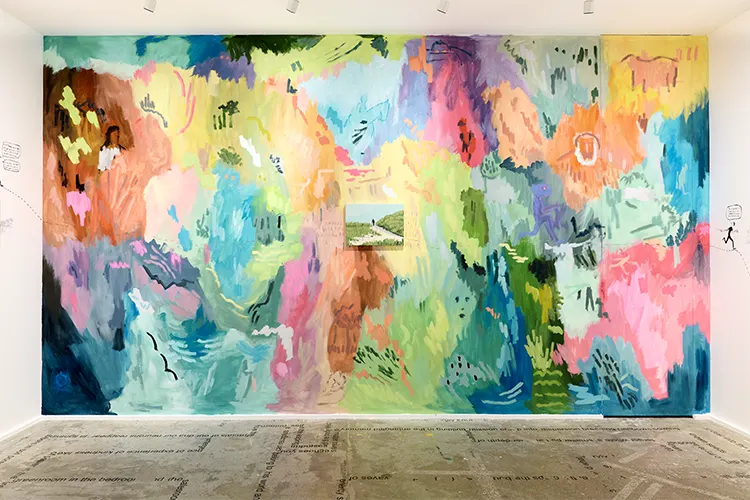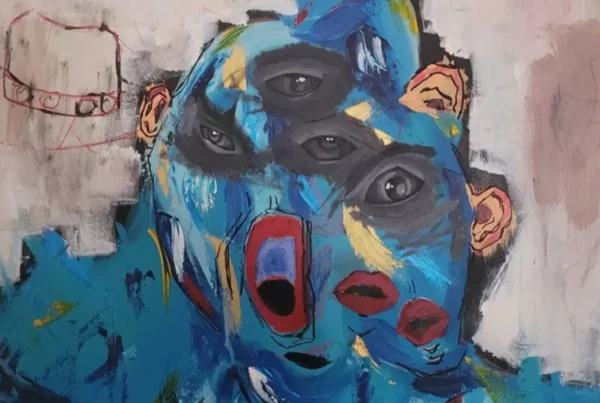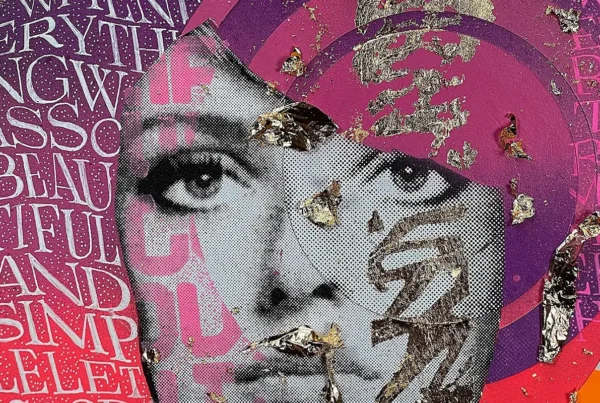The Balance of Humor and Anxiety in Everyday Observations
Jean Jullien’s artistic voice is unmistakable—his bold yet fluid lines, coupled with a keen sense of humor, capture life’s absurdities and tender moments alike. His work spans illustrations, paintings, sculptures, and large-scale immersive exhibitions, each infused with a balance of lightheartedness and introspection. Jullien’s ability to distill complex emotions into deceptively simple visuals has made him one of the most recognizable contemporary artists, reaching audiences worldwide.
From the instantly iconic Peace for Paris illustration to his ambitious installations in Seoul and Brussels, Jullien has built a career that transcends traditional artistic boundaries. His art invites people to pause and reflect on modern anxieties—media overload, fleeting time, personal identity—without feeling weighed down. By weaving universal themes into his storytelling, he creates work that resonates deeply, whether through a single sketchbook drawing or an entire exhibition.
At the heart of his creative process is a delicate balancing act: embracing both the joy and uncertainty of life. His illustrations may appear playful at first glance, yet they often contain layers of introspection. This contrast is not a calculated strategy but an authentic expression of how he perceives the world. He acknowledges the chaos surrounding us but chooses to engage with it through a lens that remains accessible, inviting, and deeply human.
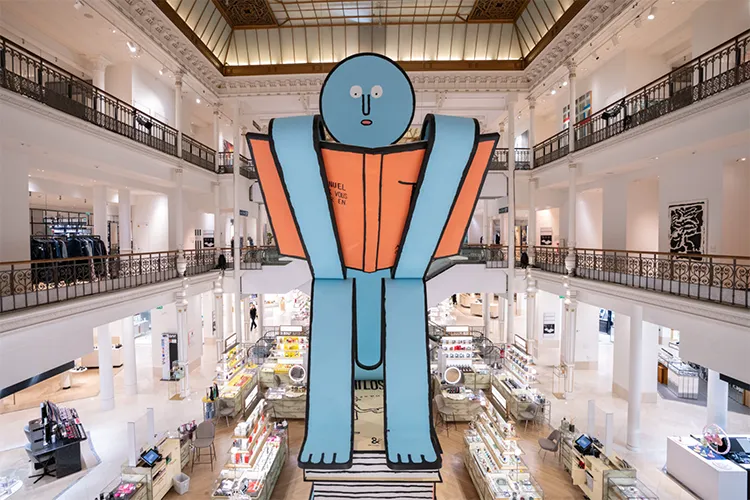
Jean Jullien: Expanding the Canvas into Immersive Spaces
Jullien’s artistic evolution has led him beyond illustration into immersive, large-scale environments where audiences can step inside his world rather than merely observe it. His recent exhibitions, including those in Seoul and at MIMA in Brussels, mark a turning point in his approach. No longer confined to individual works, he now constructs cohesive narratives that envelop visitors, allowing them to experience his artistic universe on a grander scale.
This shift was a natural progression for Jullien, who has always explored multiple mediums—painting, sculpture, animation—alongside his illustration work. With these exhibitions, he can integrate all these elements into a single, unified vision. The experience is no longer just visual but spatial, guiding visitors through emotions and ideas in a way that traditional formats cannot. The MIMA exhibition, in particular, allowed him to push this concept further, transforming his observations into a fully immersive story that unfolds as visitors move through the space.
Despite the increase in scale, Jullien remains committed to the intimate, relatable themes that have defined his work. His art has always drawn from everyday moments—small joys, fleeting anxieties, quiet reflections. While his exhibitions now engage audiences on a larger physical level, the emotional core remains the same. Whether through a small sketch or a towering installation, he continues to explore the shared human experience with warmth, curiosity, and a touch of humor.
As his practice expands, 2025 marks an exciting year for Jullien. In May, he will be presenting work at the World Exhibition 2025 in Osaka, bringing his signature wit and observational storytelling to an international audience. Later this summer, he will hold a solo exhibition at Nanzuka Institute, further exploring the boundaries between illustration, painting, and immersive installation. These upcoming projects reinforce his commitment to engaging audiences across different cultures and artistic formats.
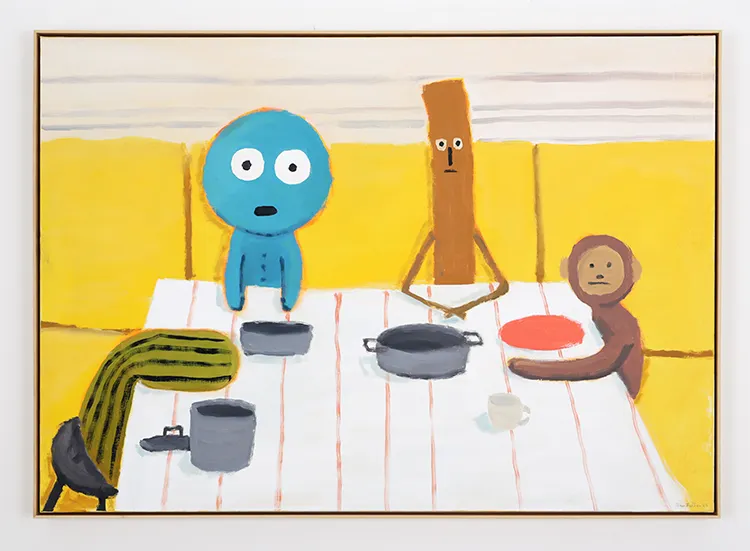
The Artistic Tension Between Illustration and Painting
While Jullien is best known for his illustrations, his transition into painting has been both a challenge and a revelation. Unlike illustration, where he had long established a comfortable visual language, painting forced him to confront new artistic uncertainties. The shift required him to rethink his approach, allowing room for exploration, imperfection, and gradual discovery.
At first, his paintings were met with mixed reactions. Some audiences found them too subdued compared to his vibrant illustrations, leading him to question whether he had made a misstep. But rather than retreating, he embraced the discomfort, using it as motivation to develop a hybrid style that merges painting’s depth with the immediacy of his drawing practice. Over time, he found ways to integrate his two disciplines, allowing his lines to evolve while maintaining the clarity and spontaneity that define his work.
This interplay between precision and fluidity has also influenced his approach to drawing. Painting loosened his grip on perfection, encouraging more spontaneity in his illustrations. At the same time, returning to drawing after painting made him more intentional with his lines, striking a balance between control and freedom. This ongoing dialogue between mediums continues to shape his artistic practice, pushing him to constantly refine and redefine his visual storytelling.
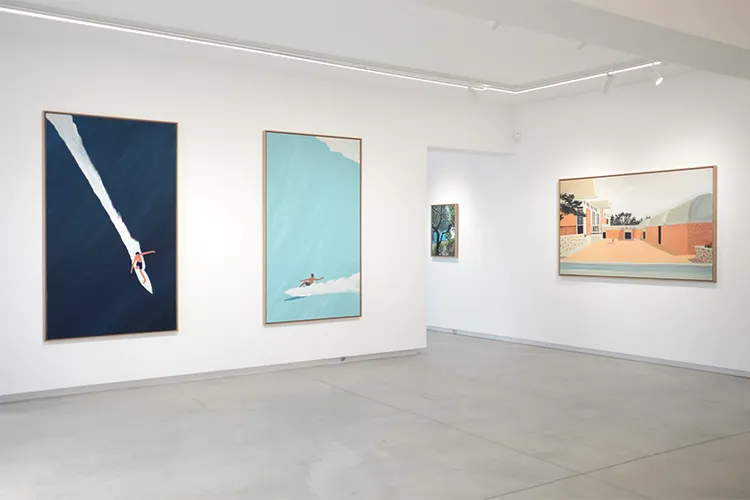
Jean Jullien: Escapism in a World of Overexposure
The concept of escapism has become central to Jullien’s work, not as an avoidance of reality but as a means of processing it. In a time of relentless media saturation, political turmoil, and environmental uncertainty, the need to step back and reassess how we engage with the world has become more pressing than ever. Jullien doesn’t claim to have answers, but he is deeply interested in exploring the question: Is escapism a necessary refuge or a distraction from responsibility?
His exhibitions and paintings increasingly reflect this theme, examining how people use different forms of media—social platforms, video games, fiction—to momentarily detach from the overwhelming nature of modern life. He is fascinated by the way media consumption shapes our perspectives, both in constructive and damaging ways. Having moved back to France, he has made a conscious effort to disconnect at times, spending more moments offline, surfing, and painting. Yet, he acknowledges the ongoing struggle with screen addiction and the anxiety it fosters.
Despite his growing body of work, Jullien resists labels, particularly those that attempt to categorize him within a national identity. While his French heritage subtly informs his artistic lineage—particularly in satire and social commentary—he sees his work as existing beyond geographical boundaries. Whether through a simple illustration or an immersive installation, his art remains universal, offering a space where audiences can pause, reflect, and, if only for a moment, escape into a world of wit and wonder.
